Roderick Bates of 3D visualisation specialist Chaos explores the findings of new global research exploring the adoption of, and attitudes to, artificial intelligence in architecture
The practice of architecture is continuously evolving, with artificial intelligence (AI) emerging as the latest innovation to reshape industry workflows. As director of corporate development at Chaos, I was particularly interested in the insights unveiled in the latest report from Chaos and Architizer, the State of AI in Architecture.
Capturing responses from 1,227 professionals globally, this report offers a clear overview of AI in the current architectural landscape, showing the AI workflows that are already widely adopted and highlighting the increasing importance of robust AI integration to the architectural community.
Confidence and comfort in AI-generated solutions
One point drawn from the report is the current presence of AI within architectural firms. What was once a technologic parlour trick is now a strategic imperative, for both larger firms in possession of the necessary resources to support the adoption of AI workflows and smaller firms seeking a competitive edge. This resonates with my own observations, as I’ve witnessed the AI-cautious become committed users, once they realise how AI can bring a level of efficiency and speed to design workflows that unlocks new realms of creative expression.
Visualisation quality is always top of mind at Chaos, so a particularly important finding was that over two-thirds of the survey’s respondents expressed satisfaction with the quality of AI-generated renderings compared with traditional methods. This resounding affirmation of AI visualisation quality underscores both the meteoric rise in the quality of AI renders and the growing confidence users have in AI’s ability to produce visually compelling representations of architectural designs. As AI continues to refine its capabilities and algorithms to match the already high visual quality with better fidelity to the designer’s intent, architects will increasingly embrace AI as a reliable tool for creating high-quality renders that meet or exceed the standards set by traditional methods.

Furthermore, the survey revealed a significant level of comfort among respondents when it came to incorporating AI-generated design solutions into their own projects. An impressive 70% expressed comfort with leveraging AI-generated solutions, indicating a prevailing sense of trust and acceptance of AI in the design process. This level of comfort suggests that architects recognise the value and efficiency of AI-driven tools in enhancing design workflows and achieving project objectives. These statistics also indicate clients are receptive to paying for work created via AI and comfortable with AI outputs incorporated into the designs themselves.
Challenges and ethical considerations in AI integration
Navigating the terrain of AI integration is not without its challenges. Amid the fervour of adoption, a gap is becoming increasingly evident between those with and without formal training in the use of AI. Only 60% of respondents shared that they had received any formal training, indicating a critical need for accessible training programmes tailored to the needs of the architectural community. Bridging this knowledge gap for the 40% without training will empower them with the skills and knowledge to harness AI and stay competitive in this technologically dynamic environment.
Despite these challenges, it is impossible not to be swept up in the transformative impact of AI. AI is already demonstrating it has the power to completely revolutionise the architectural workflow, whether it be generating visuals based on text prompts or enhancing render quality at the click of a button. These two examples may seem simple, but they replace hours of labour, offering architectural firms newfound levels of efficiency, which can directly translate to cost savings and more time for design exploration.
Interestingly, the survey reveals a correlation between firm size and comfort level with AI-assisted design. Small and large firms – those with fewer than 20 employees, or 100 or more – were found to be more likely to express being “very comfortable” with AI-assisted design compared with medium-sized firms with 20-99 employees. This correlation suggests that firm size may influence risks and rewards calculus of AI adoption. Small firms may feel compelled to embrace AI technology to remain competitive or gain a strategic advantage, while large firms have the resources to research, learn and become comfortable with AI tools over time.

Conversely, medium-sized firms exhibit a more risk-averse stance, preferring to maintain existing workflows to meet client expectations and preserve budgetary constraints. This cautious approach reflects a broader trend of measured adoption and highlights the diverse attitudes and strategies employed when navigating AI integration.
One point of contention revolves around concerns over AI’s impact on jobs within the AEC sector. The survey reveals a near-even split in sentiment, with 52% of respondents expressing varying degrees of concern and 48% adopting a more neutral stance. Interestingly, when delving deeper, it becomes apparent that opinions on this topic are nuanced, with only 17% and 18%, respectively expressing that they are “very” or “not at all” concerned, but within those two cohorts, a majority of each are currently using AI in architectural work, indicating a stark difference in opinion among those who are striving to understand AI’s capabilities first-hand, versus those who are not.
The future of AI in architecture
The report’s findings paint a compelling picture of AI’s pervasiveness both today and tomorrow, with 78% of respondents predicting that AI will strongly or moderately influence architectural design within the next year. This collective foresight underscores AI’s evolution from novelty to a cornerstone of architectural practice. As an early adopter and advocate for AI integration, I share in this conviction and envision a future where AI is seamlessly woven into the fabric of architectural workflows.
Yet, as AI’s role expands, ethical considerations loom on the horizon. The concerns about job displacement, intellectual property rights and transparency are all valid and demand our attention. Collectively, software providers and the architectural community must navigate these uncharted ethical waters with diligence and foresight. A robust framework of ethical guidelines, as advocated by 74% of respondents, is essential to safeguarding the integrity of our profession.
The survey findings paint a picture for AI in architecture characterised by both promise and uncertainty. AI’s potential to revolutionise architectural practice is undeniable, but the diversity of opinions and concerns captured in the survey underscore the importance of ongoing dialogue, collaboration and ethical reflection.
With a mindset of openness, inquiry and responsibility, architects and software developers can harness the transformative power of AI while navigating its complexities, ensuring that AI integration enhances – not hinders – the integrity and creativity of architectural practice for generations to come.

